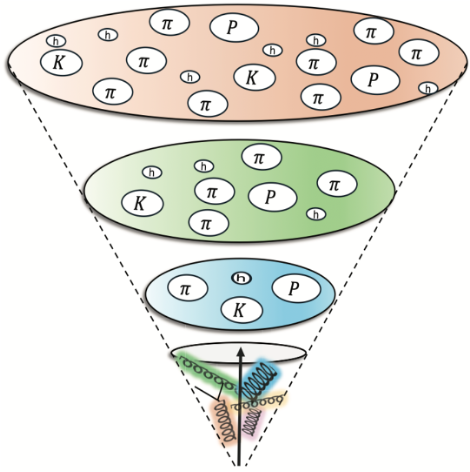Stony Brook, NY - February, 2025
Maximal Entanglement Sheds New Light on Particle Creation
A groundbreaking study, published in Physical Review Letters as an Editor’s Suggestion [1], has revealed maximal entanglement in hadron formation during the fragmentation of a jet, based on data from the ATLAS experiment at CERN. For the first time, Stony Brook and Brookhaven Researchers have established a direct connection between entanglement entropy and hadron production within a jet.
 In proton-proton collisions, jets emerge from a cascade of quarks and gluons, which
evolve into hadrons. Despite extensive research, the connection between a jet’s initial
conditions and its final particle distribution has remained elusive.
In proton-proton collisions, jets emerge from a cascade of quarks and gluons, which
evolve into hadrons. Despite extensive research, the connection between a jet’s initial
conditions and its final particle distribution has remained elusive.
Previous studies have used quantum entanglement to link the internal structure of protons to particle production in electron-proton collisions. This new study bridges a crucial gap by demonstrating that hadrons within a jet retain information about their origins, offering a novel quantum-level perspective on the fragmentation process.
This research paves the way for further exploration of how quantum entanglement enhances our understanding of hadron formation. The upcoming Electron-Ion Collider at Brookhaven, with active participation from Stony Brook's Department of Physics, promises unprecedented precision in studying quantum entanglement effects in high-energy collisions.
Update: This work is featured on the BNL news page, including an interview with the authors. (April 11, 2025)
[1] J. Datta, A. Deshpande, D. E. Kharzeev, C. J. Naïm, and Z. Tu, "Entanglement as a probe of hadronization," Phys. Rev. Lett. 134, 111902, arXiv preprint arXiv:2410.22331, Oct. 2024.

